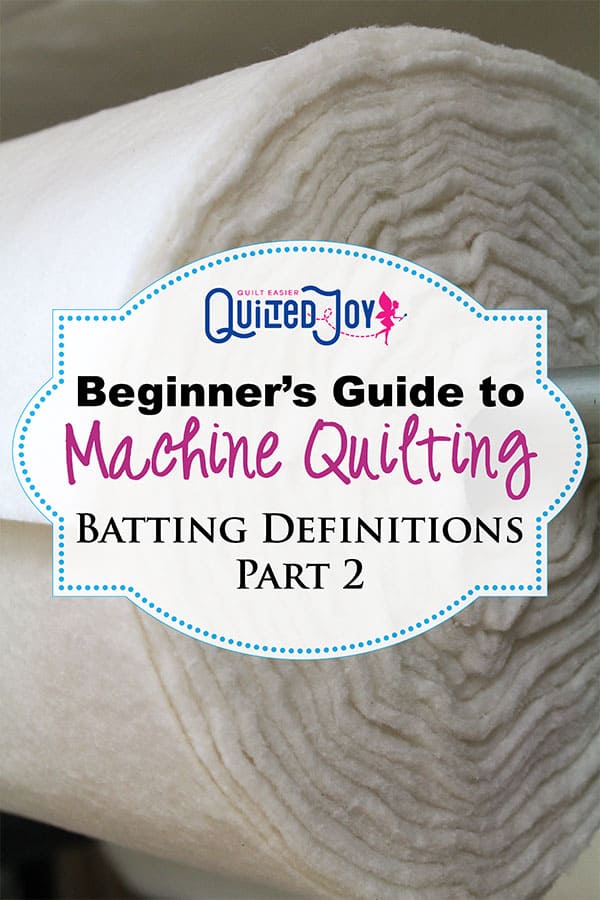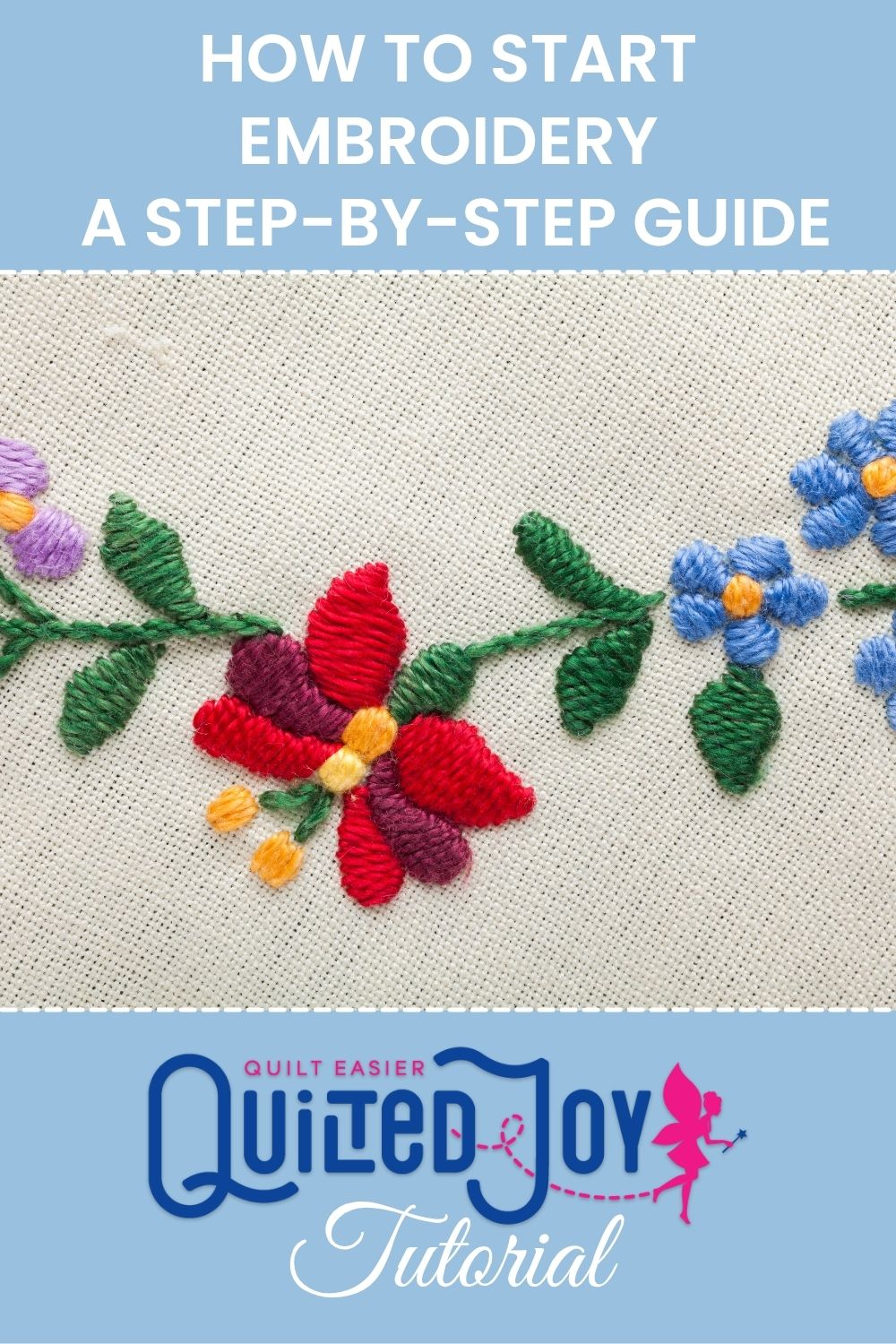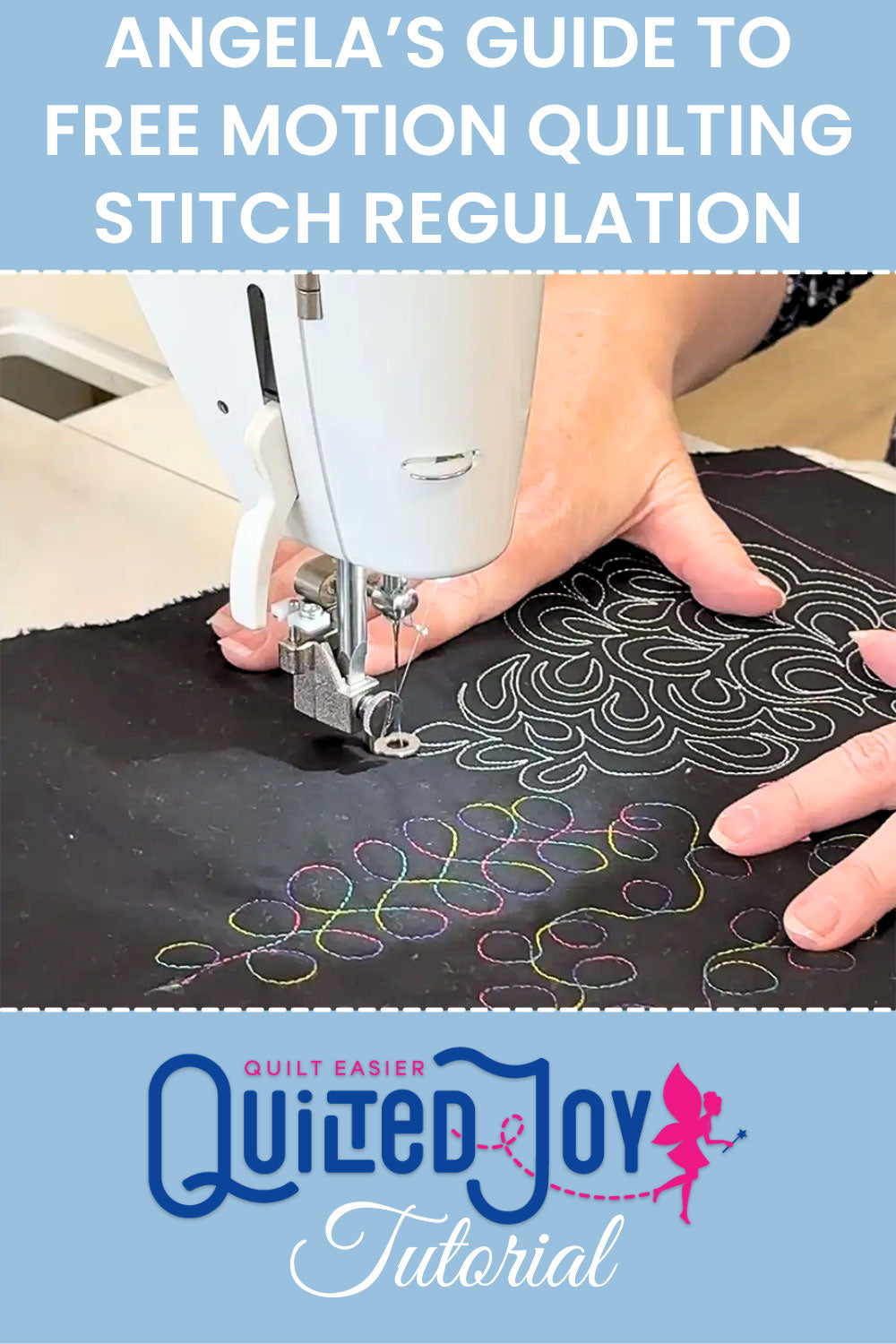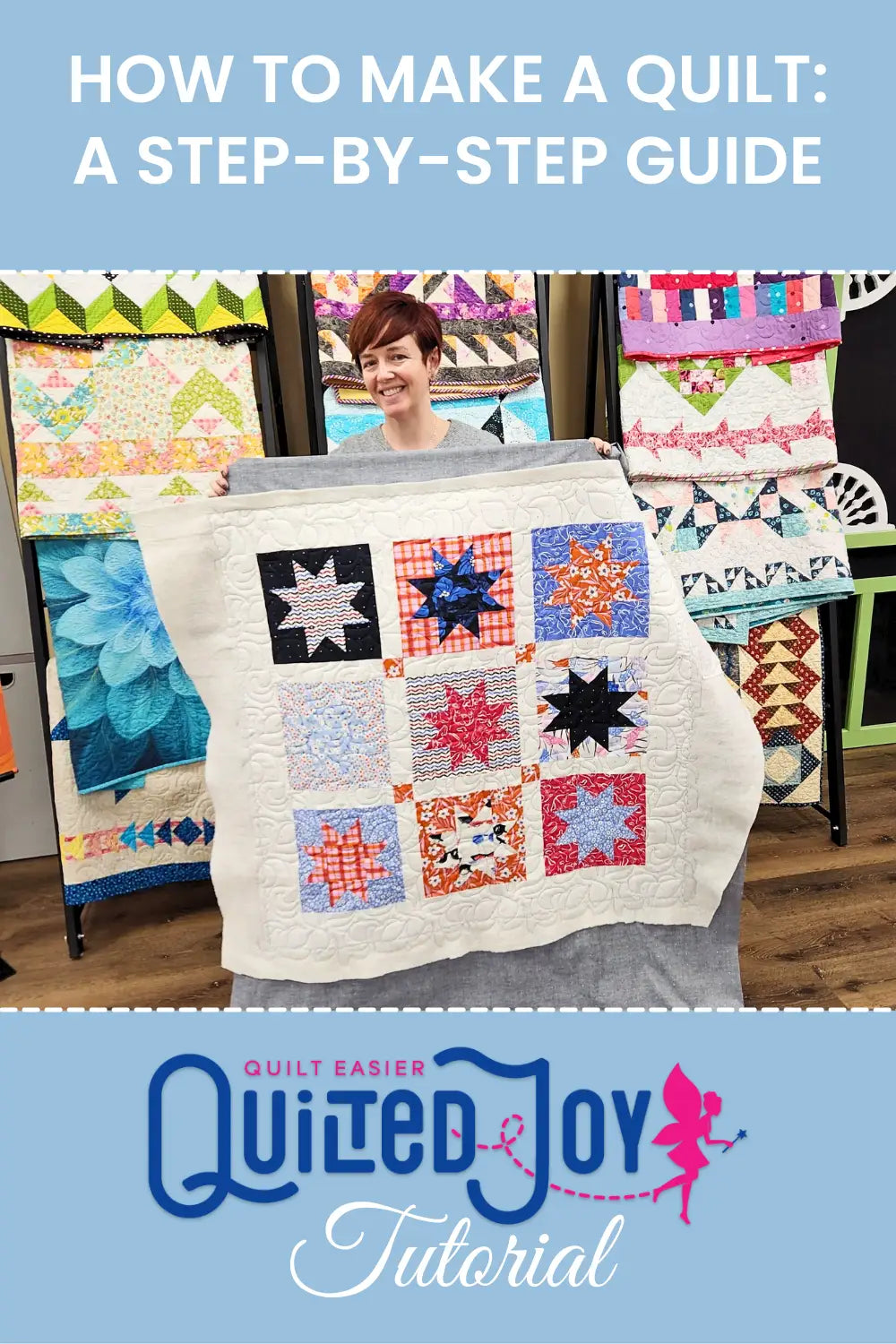Beginner's Guide to Machine Quilting: Batting Definitions Part 2

In the last Beginner's Guide to Machine Quilting post, I started talking about some common batting terms. Today I've got a few more terms you'll often hear about batting. There are many different ways all the little fibers that make up a batting can be held together. There are different terms used to describe each of these processes and when selecting a batting for your project it is important that you understand the words the manufacturers use to describe the process of holding the batting together.
Scrim: This is a bit like tulle. It is a very lightweight polypropylene netting applied to one side of the batting and it helps to stabilize the various fibers that make up the batting. It also acts as a fence, or a gate, to prevent the fibers of the batting from migrating out the back of your quilt. Scrim allows for wider spacing between stitching lines and battings that contain scrim are generally more stable. I don't recommended a batting with scrim for hand quilting as it can be difficult to needle. When using my longarm machine, I generally use a batting that has a scrim- even my 100% cotton battings as they are more stable.
Bonding: A process used to hold batting fibers together. It can be thermal bonded or resin bonded. Most polyester battings are bonded. Thermal bonded battings combine regular polyester with polyester that melts at a low temperature. The batting is heated and the batting fibers bond together. This batting should not be dry cleaned and will not hold up as well over time. Resin bonded battings are held together using a coating or a glaze that is applied to both sides of the batting. The higher the resin content, the stiffer the batting but the more durable it will be. The coating adds strength but doesn’t completely eliminate bearding.

Carded: Process of brushing raw or washed fibers together. Nothing else is done to hold the fibers together and this type of batting must be quilted quite densely to prevent shifting
Needle Punched: After the fibers are carded, a series of needles are used to compress and meld the batting fibers together. This process is similar to felting as the fibers become highly intertwined and are very stable.
Siliconized: Batting fibers are treated with silicone which makes them very slick. It makes the batting easy to needle for hand quilters.
Bleaching: This process removes some of the woody field trash that is a natural part of the cotton plant. The batting is processed with chemicals to provide even color. Prior to bleaching the batting fibers are typically scoured at a high temperature. It can add more stability to a batting which may help more fragile battings work better on a longarm quilting frame. When I buy cotton batting I like to use bleached batting as it is very stable.
Want to Know Even More About Batting?
We dedicated a whole meeting of the Quilted Joy Clubhouse to choosing the right battings for your quilt! Watch the replay of the meeting here!


I’m Angela- Co-host of the Fons & Porter’s Love of Quilting PBS show. APQS Long arm Dealer and Educator. Triplet Momma. Designer. Thread Bimbo.








































Leave a Reply